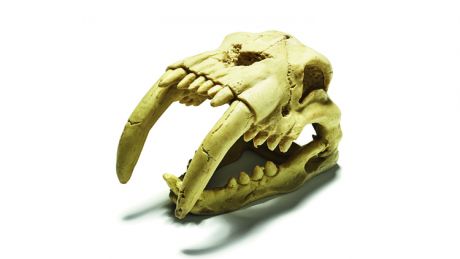Does the Paleo diet work?
Every month nutritionist Drew Price follows a different diet to see if it’s as effective as its creators claim. This month: Paleo

In This Series
- Paleo Diet Explained
- Gourmet Paleo Diet Recipes For The Caveman Connoisseur
- 7-Day Paleo Diet Meal Plan
- 5 Key Paleo Principles
- Does the Paleo diet work?
The diet
The Paleo diet is based around the foods our Paleolithic, hunter-gatherer ancestors would have consumed before the advent of farming and processed foods, which means you avoid entire food groups – including dairy produce and grains.
We put together a week long Paleo diet meal plan incase you fancy giving it a try
The claim
The argument is that by ‘going Paleo’ you’ll be eating the foods that the human race has been eating for the longest amount of time, which are therefore the foods to which your body is best adapted. Recent changes in diet brought about by food processing are at the core of many modern lifestyle-influenced diseases, and Paleo advocates claim that cutting these foods out can reduce the risk of diabetes, heart disease and cancer, and even prevent or cure auto-immune diseases.
The method
The diet is based around meat, fish and vegetables, with some fruit, nuts and seeds. Grains, dairy, legumes and cooking oils are all off the menu, as well as anything that’s been processed, which means you basically have to cook all your meals from scratch using fresh ingredients. There’s a common myth that a Paleo diet entails low carbs and lots of meat – a kind of caveman Atkins – but it doesn’t actually specify different macronutrient portion sizes or ratios. The focus is on what you eat, not how much.
Check out Drew's month long attempt at the IIFYM diet
The reality
Grains and dairy products are cheap and make things taste better, which is why they’re used in so many meals and snacks. Grains in particular are often the blank canvas that you arrange most other ingredients on or serve them with, so to get around their absence you have to be more creative with your cooking (see the eggs Paleo recipe, right).
Sign up for workout ideas, training advice, reviews of the latest gear and more.
Getting starch, which we rely on for a lot of our energy, is a problem. White potatoes – a modern agricultural creation – are banned, which means that after a month of Paleo I never want to eat another sweet potato or pumpkin. Going strict Paleo was tough, and I fell off the wagon a few times, especially when I was eating out.
The results
With no portion control prescribed, I wasn’t expecting to see significant changes in body composition, but after a series of tests conducted by Speedflex I found that my body fat had still dropped half a percentage point without any significant loss of muscle mass. The real eye-opener was the impact Paleo had on markers of long-term health. In addition to small improvements in my ‘good’ HDL cholesterol and visceral fat (the fat around your organs), my IGF1 – insulin-like growth factor 1, a protein associated with cancer – and ‘bad’ LDL cholesterol levels had gone down by 30% and 25% respectively, which my doctor described as a ‘dramatic improvement’.
The verdict
If you’re looking for quick and dramatic fat loss or muscle-building results, going Paleo isn’t the best option for you. But if you want an eating regime that will significantly improve your health and – to a lesser extent – your body composition, and you can put up with the extra cost, temptations and endless sweet potatoes, it’s an excellent choice.
Caveman eats
This Paleo twist on eggs Florentine swaps hollandaise sauce for mashed avocado and a muffin for a tomato slice
Ingredients
1 avocado / 1 free-range egg / Handful of spinach / 1 tomato
To make
Slice the tomato and lightly steam the spinach. Remove the skin and stone from the avocado and mash it into a paste with a fork. Poach the egg in a pan of boiling water. Place the poached egg on a thick slice of tomato and serve with the spinach and avocado on top.
Price’s verdict: ‘This might be a popular Paleo recipe, with lots of protein and good fats, but it’s not fooling me. It’s fairly tasty – but I’d choose the muffin every time.’
Drew Price is a nutritionist and a former columnist for Men’s Fitness UK, which predated, and then shared a website with, Coach. He is the author of the The DODO Diet. He holds a masters degree in nutrition science from Western Sydney University, and holds certifications from the American College of Sports Medicine and the National Strength and Conditioning Association. In 2022, he is a doctoral researcher at Reading University.
